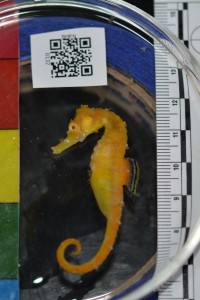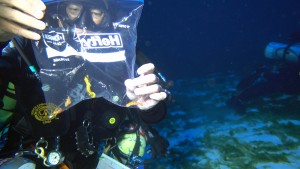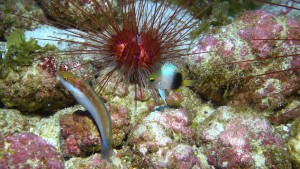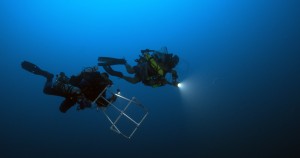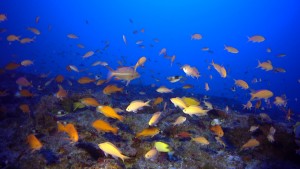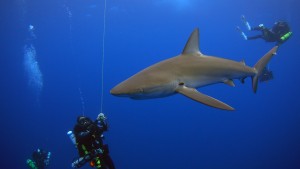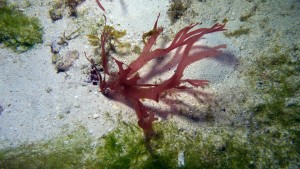NWHI Expedition Turns Up Large Rates of Unique Species
A crew of scientists returned from a 28-day research expedition on the NOAA ship Hi’ialakai, exploring the deep coral reefs within Papahānaumokuākea Marine National Monument in the Northwestern Hawaiian Islands on Wednesday.
Among the species of marine life observed were a number of species that had never been seen before, including a possible new species of seahorse and a sea star that had never been found in Hawai’i.
Rarely seen ecosystems at depths of up to 300 feet were surveyed using advanced diving technology. High abundances of species found only in the Hawaiian Islands were noted at these depths through the fish surveys.
“On some of the deep reefs we surveyed, 100 percent of the fishes we recorded were endemic, meaning that they are all unique to the Hawaiian archipelago,” said Randall Kosaki Ph.D., NOAA’s deputy superintendent of Papahānaumokuākea Marine National Monument and chief scientist of the expedition. “This is the highest level of endemism recorded from any marine ecosystem on Earth.”
In addition to observing unique species, the team was the first to dive on several open-ocean seamounts in the monument. The monuments, which rise from the flood of the ocean in 14,000 feet of water and summit within 200 to 300 feet of the surface, were first mapped using high resolution multibeam sonar in 2014 and 2015.
On the seamounts, scientists collected specimens and photographs of new records of marine life from the seamounts. The specimens included potential new species of fish, algae, and invertebrates. They will be sent to experts at various museums around the world to confirm the identity of the organisms.
“Discoveries of rare and unique species of marine life remind us why Papahānaumokuākea is so special and why we need to continue exploring, managing, and protecting it,” said Athline Clark, NOAA superintendent of Papahānaumokuākea Marine National Monument, “We are delighted to have so many partners who help us to achieve these significant research findings.”
The deep divers did more than just study the monument’s environment. A medical study to understand the effects of extreme dive exposure on human physiology was conducted on the divers.
Dr. Neal Pollock, research director of Divers Alert Network, led a team that conducted ultrasound imaging of the divers’ hearts after ascent from deep dives. Those deep dives sometimes have gas bubbles form in the blood stream on ascent from deep diving, known as “the bends.” Divers who experience the decompression sickness can face sometimes life-threatening conditions.
“We hope this information will better inform the algorithms used by dive computers to guide divers through gradual decompression from deep dives,” said Pollock. “We hope to make scuba diving safer for scientific divers as they expand our understanding of the oceans.”
Researchers from NOAA’s Office of National Marine Sanctuaries, NOAA’s Pacific Islands Fisheries Science Center, the Hawai‘i Institute of Marine Biology, the Bernice P. Bishop Museum, and Divers Alert Network made up the research team.
The NOAA Diving Center, part of the NOAA Office of Marine and Aviation Operations, supported this mission by providing staff to serve as a divemaster, diving medical technician, and hyperbaric chamber operator for the 348 dives that were conducted during the mission.





